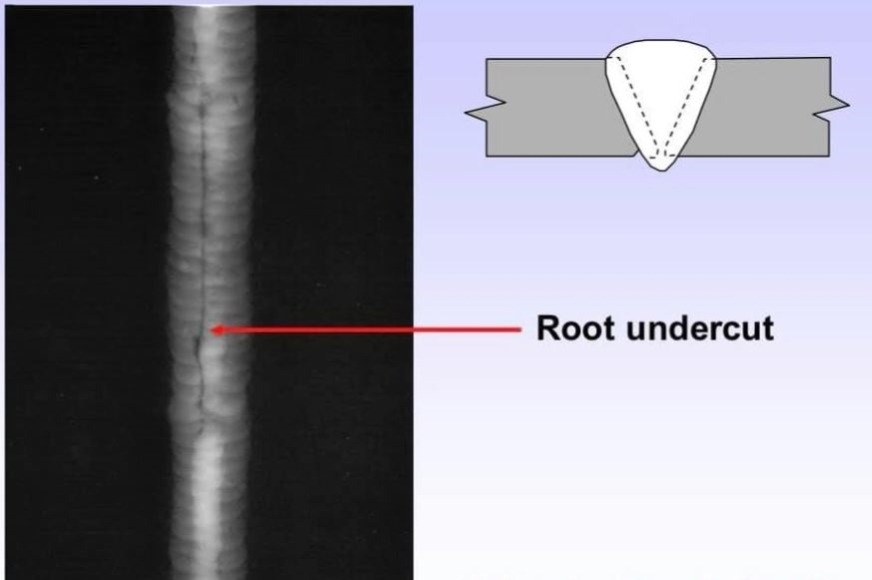Efficient Ways to Prevent Weld Undercut in Your Welding Jobs
Efficient Ways to Prevent Weld Undercut in Your Welding Jobs
Blog Article
A Comprehensive Overview to Identifying, Stopping, and Fixing Undercut Welding Issues in Your Welding Projects
In the world of welding, experiencing undercut problems is a common obstacle that can endanger the structural integrity and total high quality of your welding tasks. Recognizing the origin causes behind undercut welding, having the ability to precisely spot it in your welds, and applying effective preventative measures are important abilities for any welder. In addition, having the knowledge and methods to remedy undercut problems when they do happen can make a considerable distinction in the final end result of your welding endeavors. Remain tuned as we explore the vital elements of recognizing, avoiding, and dealing with undercut welding issues, supplying you with beneficial understandings and methods to elevate your welding skills to the next level.
Usual Root Causes Of Undercut Welding
Undercut welding, a common issue in welding processes, can be created by different factors that need to be carefully recognized and addressed to ensure the honesty of the weld joint. One of the primary reasons of undercut welding is excessive warmth input.
An additional usual source of undercut welding is inappropriate welding strategy. Poor adjustment of the welding lantern or weapon, wrong angle or range between the torch and the workpiece, or irregular traveling rate can all add to the development of undercut. Furthermore, utilizing the wrong welding consumables or electrode size for a particular joint configuration can bring about undercut concerns. Determining these origin and implementing corrective actions is essential in preventing and rectifying undercut welding troubles in welding jobs.
Identifying Undercut in Welds

To recognize undercut properly, correct illumination and magnifying devices are important to inspect the weld joint thoroughly. Utilizing tools such as a welding gauge or a magnifying glass can help in spotting even the smallest undercut blemishes. In addition, running a finger or a finger nail along the weld joint can in some cases expose undercut, as the surface may feel uneven or have a dip where the undercut exists.
Precautionary Steps for Undercut
Having a deep understanding of the reasons of undercut in welds allows for the execution of efficient preventive actions to preserve weld top quality and stability. These settings need to be optimized to stop excessive warmth input, which can lead to damage formation.

Methods for Fixing Undercut

To resolve undercut problems efficiently, welders can use certain techniques focused on correcting the defect and recovering the stability of the Homepage weld joint. One method is to adjust the welding specifications, such as the voltage, current, and take a trip rate, to make sure proper warmth input and fusion. Raising the welding current or reducing the traveling rate can assist fill up in the undercut. Furthermore, changing the welding method from a press to a drag or vice versa can also aid reduce undercut.
An additional technique is to use a weaving activity while welding to guarantee correct sidewall fusion and fill in the undercut. By oscillating the welding arc from side to side within the weld joint, the welder can deposit extra filler material into the undercut areas, properly eliminating the problem.
Moreover, grinding out the undercut and rewelding the joint can be a viable solution for a lot more extreme undercut issues - Preventing weld undercut. This process includes removing the undercut area, preparing the base steel, and afterwards rewelding the joint with proper welding specifications and strategies to stop undercut read review from returning

Specialist Tips for Staying Clear Of Undercut
Making use of correct welding strategies and preserving control over vital welding criteria are crucial approaches for welders intending to stop undercut in their weld joints. One expert pointer for preventing undercut is to guarantee proper joint prep work. This involves cleaning up the base metal thoroughly to remove any kind of pollutants that might cause undercut development. Furthermore, selecting the appropriate welding process and filler steel for the certain application can help protect against undercut. Welders need to additionally pay close focus to the welding present and voltage setups, ensuring they are within the suggested variety to stay clear of overheating and prospective undercut. Preserving a constant traveling speed throughout the welding procedure is one more vital tip to avoid undercut. By relocating at a consistent speed, welders can make certain appropriate blend and minimize the possibility of undercut formation. Finally, inspecting the weld grain after conclusion can assist identify any indications of undercut early on, permitting instant restorative activity to be taken.
Verdict
To conclude, determining, preventing, and repairing undercut welding issues in your welding tasks is essential for guaranteeing long lasting and solid welds. Preventing weld undercut. By understanding the common causes of undercut, being able to identify it in welds, executing preventive steps, and utilizing correct techniques for fixing undercut, you can avoid visit their website potential concerns and develop high-quality welds. Following expert tips for avoiding undercut can aid you improve your welding skills and generate far better outcomes in your jobs
Undercut welding, a typical problem in welding processes, can be caused by numerous variables that require to be meticulously recognized and dealt with to guarantee the integrity of the weld joint. In addition, running a finger or a finger nail along the weld joint can often expose undercut, as the surface might feel unequal or have a dip where the undercut exists.
Making use of appropriate welding techniques and keeping control over essential welding specifications are vital methods for welders aiming to protect against undercut in their weld joints.In final thought, identifying, avoiding, and repairing undercut welding troubles in your welding jobs is crucial for making certain strong and sturdy welds. By comprehending the common reasons of undercut, being able to recognize it in welds, implementing preventative steps, and making use of proper methods for fixing undercut, you can prevent potential problems and develop high-grade welds.
Report this page